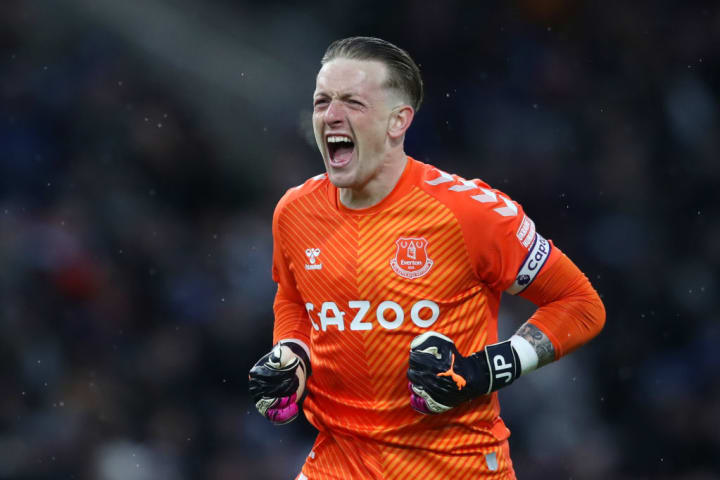
Most expensive English goalkeepers ever
Gordon Banks, Peter Shilton, David Seaman…England have had their fair share of stellar number ones over the years.
Despite the apparent simplicity of the function, there might not be a position that’s changed so drastically in recent years in terms of what’s expected of a goalkeeper. The capacity to stop the ball from hitting the back of the net is no longer enough.
Contemporary shot-stoppers, thanks to several revolutionaries, must be more than adept with their feet and act like a sweeper behind their defensive line. It’s a tough job and England haven’t been blessed with an array of world-leading goalkeepers in recent years.
That’s reflected by the modest transfer fees that constitute the ten most expensive English goalkeepers in history.
The Man Utd academy graduate enjoyed a whopping ten loan spells over seven years before moving to West Brom for £5m in 2018.
Johnstone had impressed on loan at Aston Villa in the second tier, but his stout form didn’t quite permeate into his time at the Hawthorns. His first two seasons were mixed as the Baggies enjoyed success, returning to the Premier League in 2020.
Fans questioned whether Johnstone should be the club’s number one heading into their return campaign in the top flight, but the club retained their faith in the Englishman and he enjoyed an excellent season which saw him earn a call-up to Gareth Southgate’s Euro 2020 squad.
Before becoming everybody’s favourite YouTuber and Ryan Reynolds‘ best mate, Foster was a consistently steady Premier League shot-stopper.
His big break came at Man Utd, but it was with Watford where he first garnered plenty of plaudits. Foster earned a £6m move to Birmingham in 2010, but he’d spend just one year at the club following their relegation to the second tier.
An excellent 2000/01 season with Coventry convinced Liverpool to make a 20-year-old Kirkland the most expensive British goalkeeper ever at the time.
The Reds sent £6m Coventry’s way, but Kirkland largely spent his debut season as Jerzy Dudek’s understudy. He eventually broke into the team during his second season before injuries started to take their toll on the young shot-stopper.
In the end, Kirkland spent five years at Liverpool (including two loan spells elsewhere) and made just 45 appearances for the club before departing for Wigan in 2006.

Wright enjoyed a prosperous six-year spell at Ipswich and upon his arrival at Arsenal in 2001, Arsene Wenger believed he had signed David Seaman’s long-term successor.
However, Wenger’s initial outlook couldn’t have been more erroneous.
Injuries to Seaman meant Wright was given ample opportunity to shine during his debut season, but frequent errors rendered his position at the club untenable and he left Highbury after just one year.
Heaton was capable of producing some otherworldly performances during his impressive stint at Burnley’s number one.
The traditional and fundamentally sound shot-stopper earned an £8m move to the historically significant Aston Villa but he enjoyed just one campaign as the club’s number one following Emiliano Martinez’s arrival in 2020.
You might not like the short sleeves, but such a unique (and wrong) aesthetic is yet to hinder Pope’s competence between the sticks, especially at Newcastle.
After succeeding Heaton at Burnley, Pope enjoyed several stout seasons at Turf Moor before joining an incredibly exciting project at St James‘ Park. The England international’s debut season on Tyneside was excellent as he finished the campaign with the second-most clean sheets in the Premier League, while Newcastle boasted the joint-best defensive record in the division.
Bargain.
Forster forged a lofty reputation for his work at Celtic, earning a £10m move to Southampton.
The towering keeper spent eight years on the south coast and made 134 Premier League appearances for the Saints. After starring initially, Forster endured several rough patches during his stint with the club and was usurped by Alex McCarthy as their number one towards the end of his tenure.
Young Ramsdale impressed for Bournemouth during their miserable 2019/20 campaign and Sheffield United spent what was then the second-highest fee paid for any British goalkeeper in history to bring him home.
Ramsdale had spent the latter stages of his youth career with the Blades, but his homecoming wasn’t a prosperous one. While the keeper impressed on an individual level, his side were dismal and finished rock bottom in the Premier League table.
While many laughed at Arsenal for paying £30m for a goalkeeper who had just suffered back-to-back relegations, Mikel Arteta certainly knew what he was doing.
It didn’t take long for Ramsdale to usurp Bernd Leno as Arsenal’s number one given his profiency in possession and he’s since emerged as one of the Premier League’s very best goalkeepers. While he’s not yet the finished project, Ramsdale has cemented himself as a fan favourite in north London and is a cornerstone of Arteta’s project.
Ramsdale has earned several England caps off the back of his form for Arsenal, but he’s not yet the Three Lions‘ number one because this guy is still around.
Pickford drew plenty of criticism during his first couple of years at Everton and many have questioned whether he is England’s best goalkeeper. That may still be up for debate, but Pickford’s stellar performances for both club and country when its mattered most has seen him garner the respect of pretty much everybody.
A cult hero.